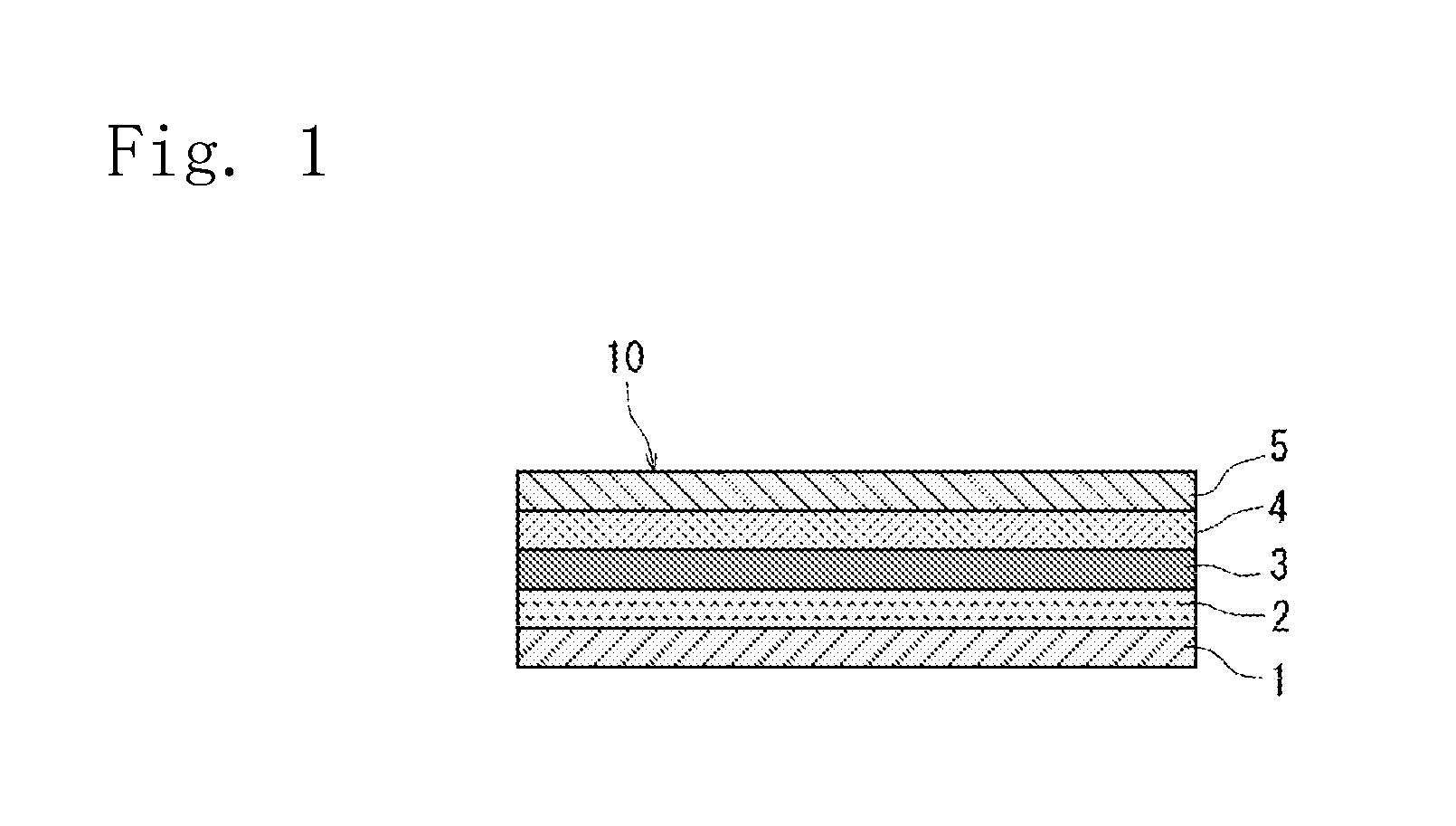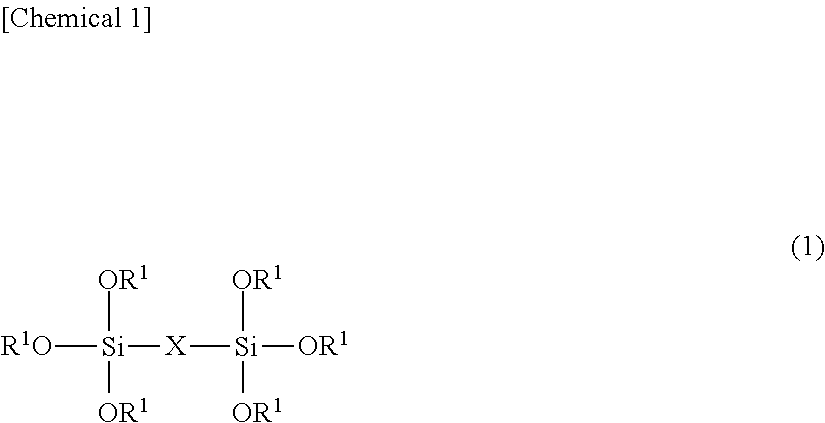Coating composition, process for producing the composition, and laminate having a hard coat layer
a coating composition and composition technology, applied in the direction of synthetic resin layered products, instruments, transportation and packaging, etc., can solve the problems of reducing the affecting the appearance of the coating composition, etc., to achieve the effect of easy formation, excellent effect, and high viscosity of the coating composition
- Summary
- Abstract
- Description
- Claims
- Application Information
AI Technical Summary
Benefits of technology
Problems solved by technology
Method used
Image
Examples
example 1
(Preparation of a Coating Composition)
[0199]44.6 Parts by mass of a γ-glycidoxypropyltrimethoxysilane, 13.5 parts by mass of a tetraethoxysilane, 0.14 parts by mass of a silicone type surfactant (trade name “L-7001”: SiL1 manufactured by Toray-Dow Coning Co.), 17.7 parts by mass of t-butanol and 58.5 parts by mass of diacetone alcohol were mixed together. While sufficiently stirring the solution, 44.7 parts by mass of a 0.017 N aqueous solution of hydrochloric acid was added thereto and after the addition has been finished, the stirring was continued at 15 to 30° C. for 20 hours. Next, 2.8 parts by mass of a tris(2,4-pentanedionato)aluminum(III) was added thereto and was, thereafter, stirred at 20 to 25° C. for 1 hour. 104.7 Parts by mass of the fine particulate composite metal oxide dispersed in methanol (SOL 1) (41.9 arts by mass of the fine particulate composite metal oxide and 62.8 parts by mass of methanol) was mixed therein and was stirred for 24 hours to obtain a coating comp...
examples 2 to 4
[0202]Laminates (hard-coated lenses) were prepared by the same method as that of Example 1 by using the above coating composition 1 but changing the resin substrates (lens substrates), and were evaluated. The results were as shown in Table 9.
examples 5 to 33
(Preparation of Coating Compositions 2 to 30)
[0203]Coating compositions 2 to 30 were prepared by the same method as the one for preparing the coating composition 1 but using fine particulate composite metal oxides, organosilicon compounds, water-soluble organic solvents, curing catalysts, aqueous solutions used for hydrolyzing the organosilicon compounds, and surfactants shown in Tables 1 to 3. Feeding mass ratios of the coating compositions were as shown in Table 5, and contents of the components were as shown in Table 6.
(Preparation of Laminates, Evaluation of Laminates)
[0204]Hard coat layers were formed on the surfaces of the resin substrates (lens substrates) by the same coating method as that of Example 1 but using the above coating compositions 2 to 30, and were evaluated for their properties. Tables 9 and 10 show the results thereof together with the thicknesses of the hard coat layers.
PUM
| Property | Measurement | Unit |
|---|---|---|
| Temperature | aaaaa | aaaaa |
| Temperature | aaaaa | aaaaa |
| Percent by mass | aaaaa | aaaaa |
Abstract
Description
Claims
Application Information
 Login to View More
Login to View More - R&D
- Intellectual Property
- Life Sciences
- Materials
- Tech Scout
- Unparalleled Data Quality
- Higher Quality Content
- 60% Fewer Hallucinations
Browse by: Latest US Patents, China's latest patents, Technical Efficacy Thesaurus, Application Domain, Technology Topic, Popular Technical Reports.
© 2025 PatSnap. All rights reserved.Legal|Privacy policy|Modern Slavery Act Transparency Statement|Sitemap|About US| Contact US: help@patsnap.com



